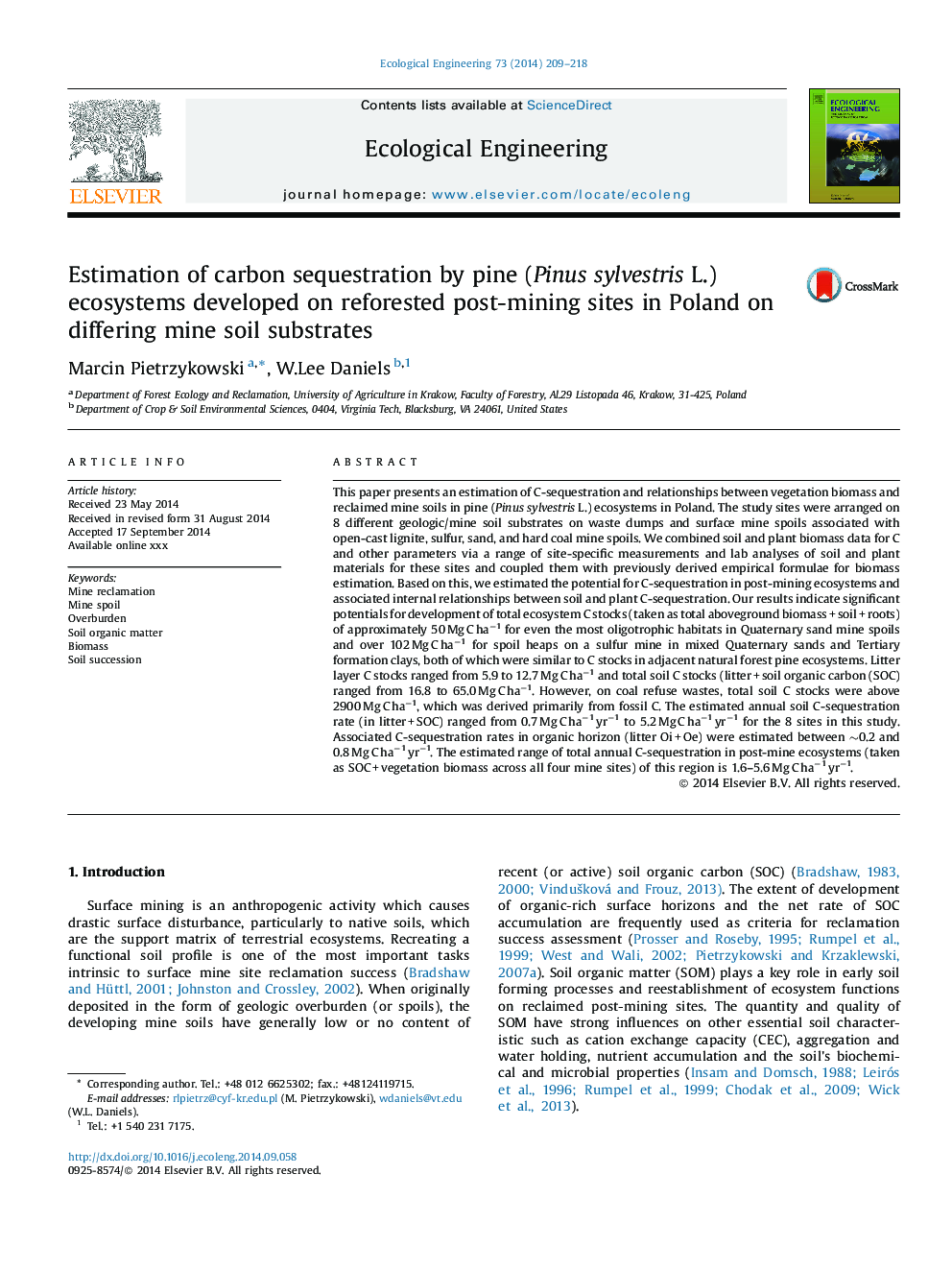| Article ID | Journal | Published Year | Pages | File Type |
|---|---|---|---|---|
| 6301894 | Ecological Engineering | 2014 | 10 Pages |
Abstract
This paper presents an estimation of C-sequestration and relationships between vegetation biomass and reclaimed mine soils in pine (Pinus sylvestris L.) ecosystems in Poland. The study sites were arranged on 8 different geologic/mine soil substrates on waste dumps and surface mine spoils associated with open-cast lignite, sulfur, sand, and hard coal mine spoils. We combined soil and plant biomass data for C and other parameters via a range of site-specific measurements and lab analyses of soil and plant materials for these sites and coupled them with previously derived empirical formulae for biomass estimation. Based on this, we estimated the potential for C-sequestration in post-mining ecosystems and associated internal relationships between soil and plant C-sequestration. Our results indicate significant potentials for development of total ecosystem C stocks (taken as total aboveground biomass + soil + roots) of approximately 50 Mg C haâ1 for even the most oligotrophic habitats in Quaternary sand mine spoils and over 102 Mg C haâ1 for spoil heaps on a sulfur mine in mixed Quaternary sands and Tertiary formation clays, both of which were similar to C stocks in adjacent natural forest pine ecosystems. Litter layer C stocks ranged from 5.9 to 12.7 Mg C haâ1 and total soil C stocks (litter + soil organic carbon (SOC) ranged from 16.8 to 65.0 Mg C haâ1. However, on coal refuse wastes, total soil C stocks were above 2900 Mg C haâ1, which was derived primarily from fossil C. The estimated annual soil C-sequestration rate (in litter + SOC) ranged from 0.7 Mg C haâ1 yrâ1 to 5.2 Mg C haâ1 yrâ1 for the 8 sites in this study. Associated C-sequestration rates in organic horizon (litter Oi + Oe) were estimated between â¼0.2 and 0.8 Mg C haâ1 yrâ1. The estimated range of total annual C-sequestration in post-mine ecosystems (taken as SOC + vegetation biomass across all four mine sites) of this region is 1.6-5.6 Mg C haâ1 yrâ1.
Related Topics
Life Sciences
Agricultural and Biological Sciences
Ecology, Evolution, Behavior and Systematics
Authors
Marcin Pietrzykowski, W.Lee Daniels,
